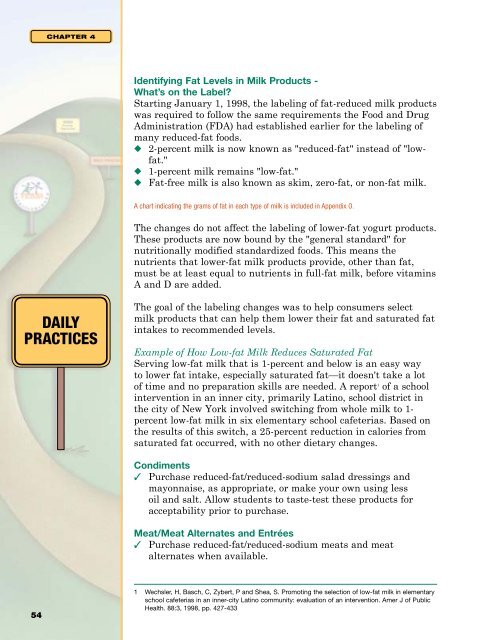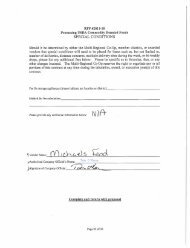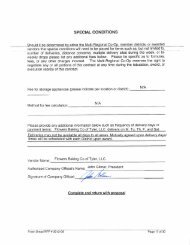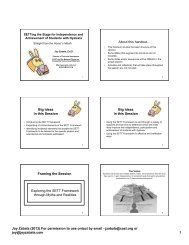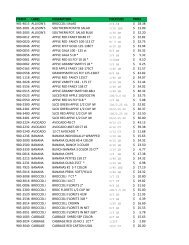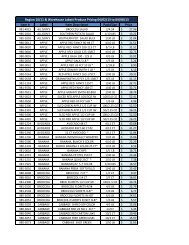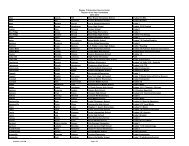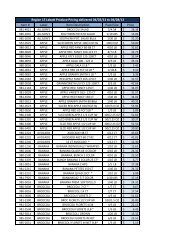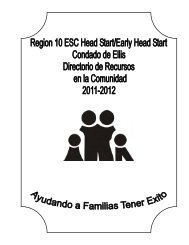Road to SMI Success Manual - Region 10 Education Service Center
Road to SMI Success Manual - Region 10 Education Service Center
Road to SMI Success Manual - Region 10 Education Service Center
You also want an ePaper? Increase the reach of your titles
YUMPU automatically turns print PDFs into web optimized ePapers that Google loves.
Chapter 4<br />
Identifying Fat Levels in Milk Products - .<br />
What’s on the Label?<br />
Starting January 1, 1998, the labeling of fat-reduced milk products<br />
was required <strong>to</strong> follow the same requirements the Food and Drug<br />
Administration (FDA) had established earlier for the labeling of<br />
many reduced-fat foods.<br />
◆<br />
◆<br />
◆<br />
2-percent milk is now known as "reduced-fat" instead of "lowfat."<br />
1-percent milk remains "low-fat."<br />
Fat-free milk is also known as skim, zero-fat, or non-fat milk.<br />
A chart indicating the grams of fat in each type of milk is included in Appendix O.<br />
The changes do not affect the labeling of lower-fat yogurt products.<br />
These products are now bound by the "general standard" for<br />
nutritionally modified standardized foods. This means the<br />
nutrients that lower-fat milk products provide, other than fat,<br />
must be at least equal <strong>to</strong> nutrients in full-fat milk, before vitamins<br />
A and D are added.<br />
Daily<br />
Practices<br />
The goal of the labeling changes was <strong>to</strong> help consumers select<br />
milk products that can help them lower their fat and saturated fat<br />
intakes <strong>to</strong> recommended levels.<br />
Example of How Low-fat Milk Reduces Saturated Fat<br />
Serving low-fat milk that is 1-percent and below is an easy way<br />
<strong>to</strong> lower fat intake, especially saturated fat—it doesn't take a lot<br />
of time and no preparation skills are needed. A report 1 of a school<br />
intervention in an inner city, primarily Latino, school district in<br />
the city of New York involved switching from whole milk <strong>to</strong> 1-<br />
percent low-fat milk in six elementary school cafeterias. Based on<br />
the results of this switch, a 25-percent reduction in calories from<br />
saturated fat occurred, with no other dietary changes.<br />
Condiments<br />
✓ Purchase reduced-fat/reduced-sodium salad dressings and<br />
mayonnaise, as appropriate, or make your own using less<br />
oil and salt. Allow students <strong>to</strong> taste-test these products for<br />
acceptability prior <strong>to</strong> purchase.<br />
Meat/Meat Alternates and Entrées<br />
✓ Purchase reduced-fat/reduced-sodium meats and meat<br />
alternates when available.<br />
54 54<br />
1 Wechsler, H, Basch, C, Zybert, P and Shea, S. Promoting the selection of low-fat milk in elementary<br />
school cafeterias in an inner-city Latino community: evaluation of an intervention. Amer J of Public<br />
Health. 88:3, 1998, pp. 427-433


